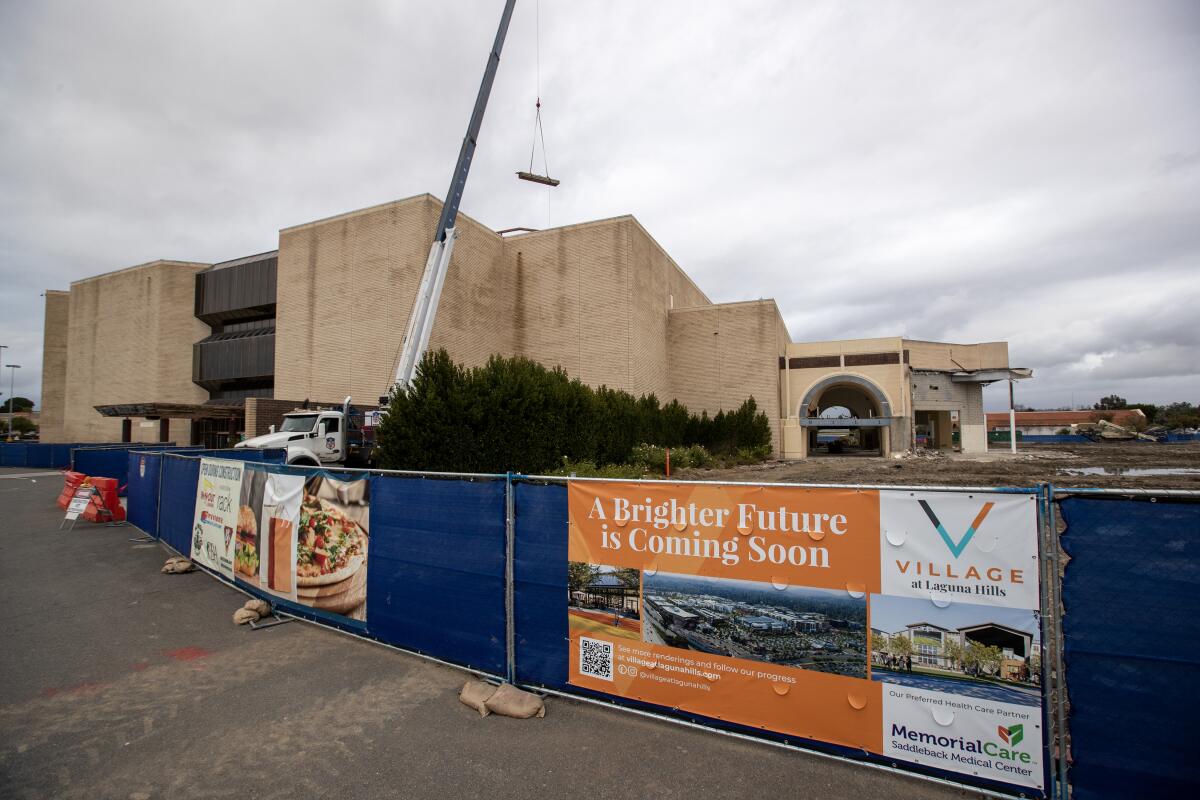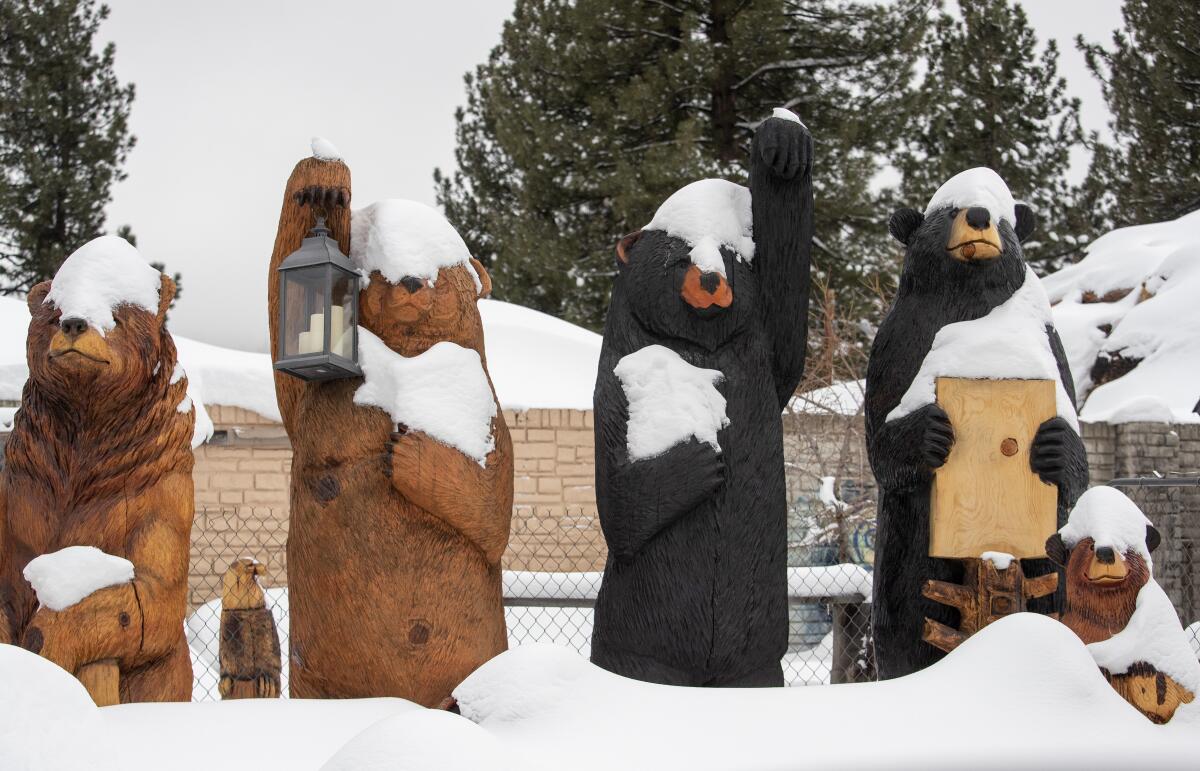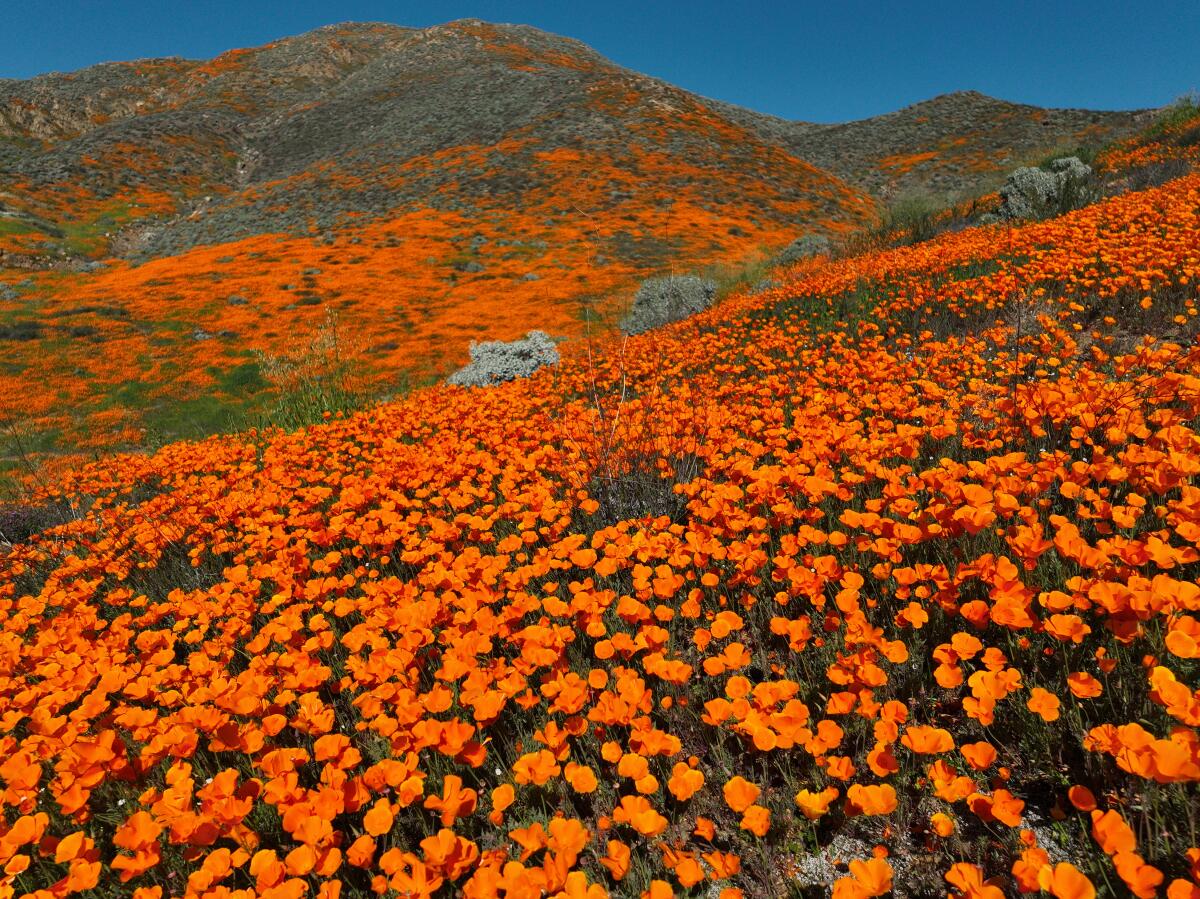One way to address California’s housing crisis: turn dying malls into housing

- Share via
Good morning, and welcome to the Essential California newsletter. It’s Thursday, March 2.
Remember the mall?
Of course you do — the pinnacle of consumerism and youth culture for generations of Americans.
My teenage memories of the mall are soaked in neon light, with essential stops at the Vans store, Hot Topic and Game Stop. I’d gawk at the risque shelves at Spencer’s, then grab a bite at Hot Dog on a Stick, washing it down with some Orange Julius as I tried desperately to look both interesting and uninterested to the girls passing by, their arms heavy with bags from Wet Seal, Hollister and Zumiez.
But as we grew up, conditions at our malls began sliding down. For many, the convenience of online shopping replaced trips to the mall. With the rise of social media, kids found new spaces to connect with their friends. After decades of declining foot traffic, the pandemic was a powerful gut punch that many retailers haven’t been able to recover from.
As California continues to sputter its way through an ongoing housing shortage, more of those empty spaces are being eyed for housing development.
That’s playing out at dead and dying malls in Orange County, as my colleague Hannah Fry reported recently.
The city of Westminster has plans to reshape its local mall to include up to 3,000 residential units and 425 hotel rooms, plus 17 acres of surrounding green space.
Roughly 20 miles southeast, work is underway to build up to 1,500 apartments, a hotel, office space, green space and new retail stores where the Laguna Hills Mall once thrived.
“Orange County is desperate for housing, with rents and home prices escalating and state laws requiring cities to zone for new construction,” Hannah wrote. “In a region where there is little undeveloped land and neighbors are likely to push back at new housing, some see declining malls as ideal places to build.”
Projects like the ones in Orange County are likely to be pitched across the state in the coming months, thanks in part to upcoming changes in state law.
In Sept. 2022, Gov. Gavin Newsom signed a pair of bills from the state Assembly and Senate that aim to make it easier to build housing on land currently zoned for commercial use. Both are set to take full effect on July 1 this year.
Projects could also catch on nationwide as developers indicate a desire to capitalize on converting commercial space to housing. A recent report from the Urban Land Institute and National Multifamily Housing Council Research Foundation noted national estimates of up to “1 billion square feet of surplus and obsolete retail space.”
That report, funded by pro-development organizations, studied the feasibility of converting commercial space like shopping malls into housing and concluded “conversions can be financially feasible in a broad range of markets” and “could go far in adding to our housing stock.”
So with the Golden State on the front lines of a national housing crisis, tearing down some of our nostalgia to put up new homes and green space could be a more common sight (but don’t sleep on the all-but-guaranteed NIMBY backlash).
And now, here’s what’s happening across California:
Note: Some of the sites we link to may limit the number of stories you can access without subscribing.
CALIFORNIA STORMS
Here’s a roundup of reporting on the impact of this week’s winter storm (and a look ahead to more expected later this month):
- Many residents in the San Bernardino Mountains were still trapped in their homes Wednesday as crews work to clear roads of heavy snow.
- Interstate 5 was closed through the Grapevine early Wednesday due to snow
- Yosemite Valley broke a 54-year-old daily snowfall record and the national park is closed indefinitely
- “The roads are closed. All of them.” Blizzard conditions in the Greater Lake Tahoe region have shut down most major highways and roads in the area
- An avalanche “engulfed” a three-story apartment building in Tahoe. Residents were evacuated and no injuries were reported.
- Forecasters say more rain and snow are likely to fall on California later this month, possibly including at least one more atmospheric river system. But experts warn that warmer rain could melt off much of the recent snow, filling rivers too quickly and triggering flooding.
- While the storm is causing lots of problems, it’s also provided Sierra Nevada skiers with beloved “cold smoke” — lighter, fluffier snow that makes for smoother runs down the sloped. Unfortunately, it also brings the risk of avalanche to a higher elevation.

Check out "The Times" podcast for essential news and more
These days, waking up to current events can be, well, daunting. If you’re seeking a more balanced news diet, “The Times” podcast is for you. Gustavo Arellano, along with a diverse set of reporters from the award-winning L.A. Times newsroom, delivers the most interesting stories from the Los Angeles Times every Monday, Wednesday and Friday. Listen and subscribe wherever you get your podcasts.
CRIME, COURTS AND POLICING
A man who was imprisoned for 38 years for murder was deemed factually innocent of the crime this week by the L.A. County District Attorney’s Office. Maurice Hastings was released in October after newly tested DNA evidence pointed to another man in the 1983 killing of a woman and two other attempted murders that Hastings was found guilty for. The rare move from county prosecutors could help Hastings in any legal action he takes for his wrongful conviction. LAist
The union for L.A.’s rank-and-file police officers says it’s willing to have officers stop responding to an array of nonviolent calls. As part of upcoming contract negotiations, the Los Angeles Police Protective League said other city departments or nonprofit agencies could handle calls for incidents including panhandling, illegal sidewalk vending and mental health episodes with no threat of violence or criminal activity. Los Angeles Times
Support our journalism
HEALTH AND THE ENVIRONMENT
As officials in one California city close off public access to expected wildflower blooms, some conservationists worry it sends the wrong message to the public. That’s where the Wild Flower Hotline comes in. Beginning March 3, Californians can call 818-768-1802 ext. 7 for weekly updates about where to view the best blooms, which are projected to be massive thanks to all the recent rain. Los Angeles Times

Despite the snow and frigid weather, California’s almond blossoms are blooming. Every February, tourists flock to Modesto for a colorful Instagram shot. Aside from photo-hungry tourists, almond farmers are also grappling with supply chain issues and bee shortages that threaten production of the major state crop. The Washington Post
CALIFORNIA CULTURE
For Latina girls and their families, quinceañera parties are a coming-of-age milestone that also emphasize heritage, family and identity. Here’s a photo-rich look inside the dazzling world of quinceañeras in San Diego County, where the lively celebrations are resuming after pandemic interruptions. San Diego Union-Tribune
Free online games
Get our free daily crossword puzzle, sudoku, word search and arcade games in our new game center at latimes.com/games.
AND FINALLY
Today’s California landmark comes with a dash of time travel from Merlin Dorfman of Livermore: the Golden Gate Bridge, photographed more than 50 years ago.

Merlin writes:
What could be more iconic? Is there anything more representative, more used as an image or name to mean “California?” I took [this photo] more than 50 years ago. Battleship USS New Jersey was coming for a port visit... I believe this was 1968. I took a day off from work and drove from Redwood City to San Francisco. Clearly I was not the only person with this idea.
What are California’s essential landmarks? Fill out this form to send us your photos of a special spot in California — natural or human-made. Tell us why it’s interesting and what makes it a symbol of life in the Golden State. Please be sure to include only photos taken directly by you. Your submission could be featured in a future edition of the newsletter.
Please let us know what we can do to make this newsletter more useful to you. Send comments to essentialcalifornia@latimes.com.
Sign up for Essential California
The most important California stories and recommendations in your inbox every morning.
You may occasionally receive promotional content from the Los Angeles Times.







